Or was it a GT? Or was it a supercar? Or was it all of the above?Ah yes, 1983… what a great time to be alive. Michael Jackson’s battling it out with every other recording artist in the world for radio airplay and winning; an unlikely GMC box van is added to millions of kids’ dream car lists thanks to a set of red turbine wheels, diagonal stripes and the A-Team; and Hooters opens for business. You know, the place with err, delicious chicken wings…
It’s also the year that Datsun’s beginning its metamorphosis into Nissan, and the year that a car stuck in the middle of the two badges, debuts. The third generation Z-car, known as the Datsun/Nissan 300ZX (early boot lids were stuck with both monikers) storms onto the global sportscar scene with higher outputs, better cabin refinement and far fancier features than the 240/260Z and 280ZX which preceded it.
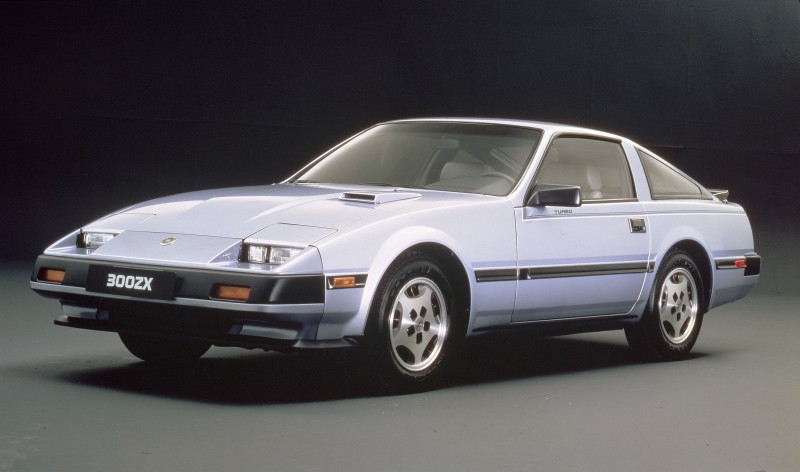
Though some would argue this new model strayed from true sportscar classification and skirted close to the GT genre, one thing was for sure – the 300ZX left the 1960s and ’70s in its dust, and brought with it a clean-sheet of Z-car design.
What’s that supposed to mean? Well besides things like inflatable seat bolsters, electronically adjustable shocks and steering wheel controls, the 300ZX (chassis codename Z31) was the first to ditch the straight-six engine until now used in every Z since 1969.
The shock! The horror! Gone was that long lump known for its sweet song and buttery smooth rev range, and in its place a six pot in vee configuration. But why? Because forward thinking, that’s why.
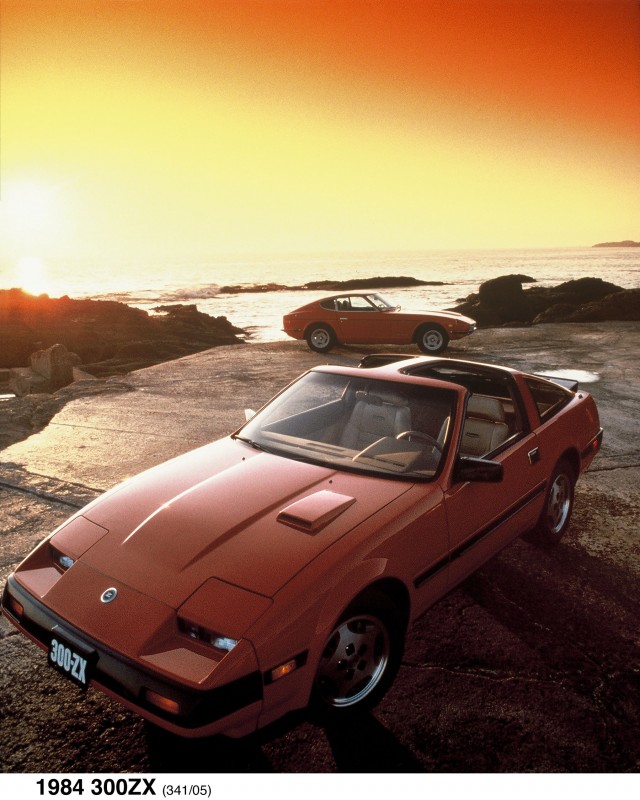
The 300ZX is styled similarly in profile to previous Zs, and its long nose would easily house another iteration of the ageing straight six, but the Japanese are thinking about the future where a more compact engine can be used across many platforms. Variations of the 300ZX’s VG30E motor would do duty in a wide variety of vehicles including pickups, SUVs and sedans up until 1999. And, cousins of this V6 are still available in Nissan and Infiniti showrooms today.
There was also a 2-litre four-cylinder option in the Z31, but it was rare, and pointless, and hardly worth mentioning. Though some have escaped to foreign markets, this 200Z was intended for sale only in Japan where all Zs get ‘Fairlady’ prefixes.
The 3-litre V6-powered 300ZX was well received globally. It came in two flavours – a naturally aspirated unit with 160 horses, and turbocharged (VG30ET) with 200 – and while it’s a bit gruffer in voice its power delivery met expectations for a Mazda RX7, Toyota Supra and Porsche 944-rivalling car at the time. When Road & Track reviewed the 300ZX Turbo early in 1984, it said its tested 0-60 time of 7.3 seconds made it one of the fastest cars in the market.
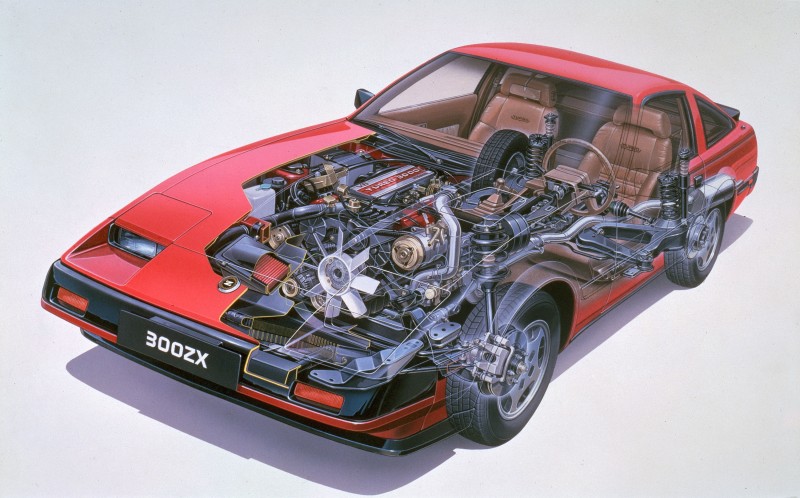
The Turbo, obviously the more desirable of the V6s, came with a single Garret T3 compressor from ’83 to ’88 and was upgraded with water cooling in 1985. In 1988 a more compact, lower inertia Garrett T25 was employed, which boosted power by 5 horses.
Most motoring publications were pleased with the overall Z31 package. Speed wasn’t an issue, luxury features were laid on thick, and its MacPherson front and independent trailing arm rear suspension offered reasonably sharp, if not stable at high-speed handling. Some moaned that styling teetered on the boring side, and its kerb weight of more than 1300kg was a bit porky. Porkier than the its two Z predecessors anyway.
The first 300ZX lived a six year lifespan, which can be divided right up the middle into two major releases. Zed anoraks will call the squarer 1983 (’84 model year) to ’86 models the ‘Zenki’, and much rounder 1987 to ‘89s the ‘Kouki’. The Zenki’s signature turbo bonnet scoop was deleted with the Kouki’s introduction, but all Turbos after 1985 were equipped with T-top roofs.
Close to 330 000 Z31 models were produced, with the US market by far responsible for the biggest uptake. 1985 was its most popular year.
And then 1989 happened. Michael’s slipping down the charts (temporarily) but his sister Janet’s taking up the slack. The A-Team’s gone the way of the dodo, but their van has become a permanent icon. Hooters is blossoming into a booming restaurant chain, still renowned for its delicious wings… wink, wink.
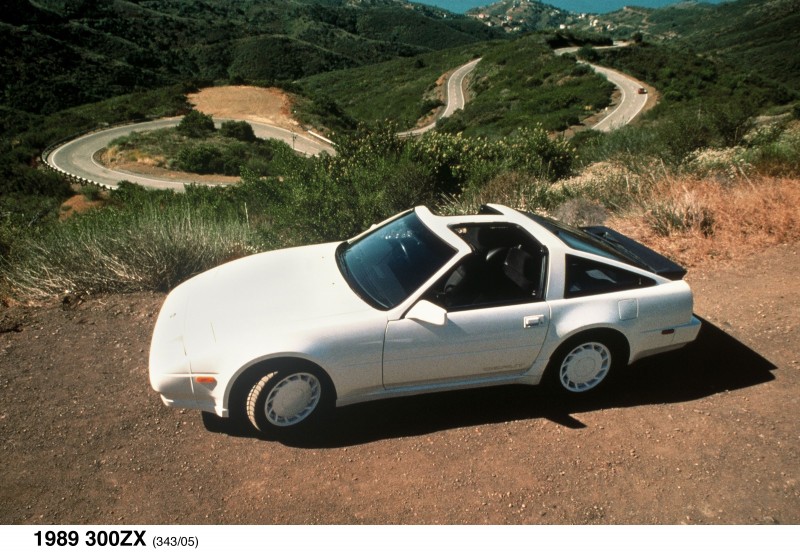
But forget all that. This is the year that the fourth Z-car, and second 300ZX, is unveiled. It’s a sportscar revelation. Much wider, hunkered down and aggressive-looking than all of its phallic forebears. It’s a dramatic and alluring machine, so wild for the time, it’s almost considered exotic. All that remains from the previous Z is its 3-litre V6 displacement.
Again there are two engine choices – a naturally aspirated, dual-overhead cam, variable valve timing (VG30DE) unit with 222 horsepower; and a turbocharged (VG30DETT). Go on, have a guess what the double-T means. Yesiree, twin turbos. A pair of Garrett T22/TB02 hybrids pumping power to 300bhp.
Suddenly, the very same reviewers which just six years earlier were crowing about the Z31’s newfound goodness, were now calling it a tawdry slouch of a sportscar. And indeed it was, in comparison to the new Z32. Performance in this ZX skyrockets and depending on with which motoring publication your allegiances lie, 0-60mph took between 5 and 6 seconds in top turbocharged specification. Big magazines all over the world fall over themselves to dish out awards for the new ZX, and accolades continued to roll in right up until its demise at the turn of the century.
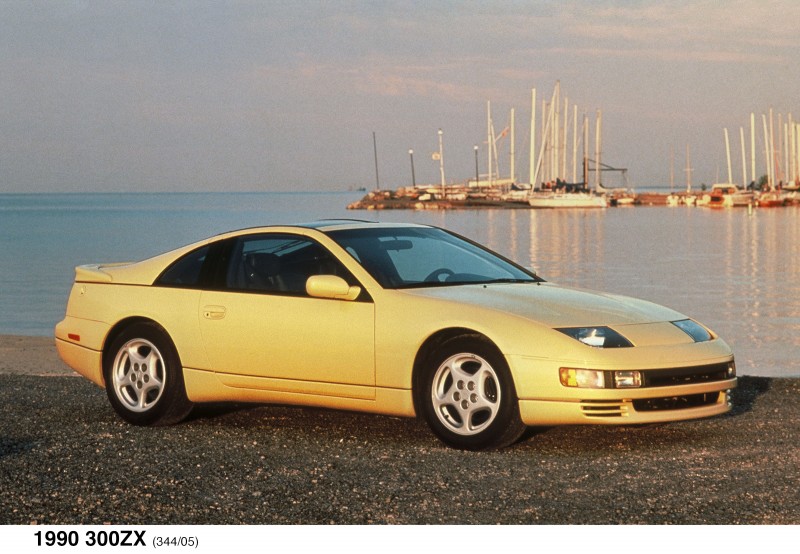
The Z32-codenamed 300ZX is a far more complex machine, and if four wheel-steering, illuminated door keyholes and titanium keys don’t prove it, the fact that it was one of the first cars designed by Nissan’s then new CAD system certainly does. Open the bonnet and it’s plain to see that only a computer could have been clever enough to cram such a tangled nest of boost pipes, vacuum pipes, water pipes, and wiring harnesses into this extremely cramped bay.
The Z32’s 11 year life span was complex in terms of derivative introduction and many market-specific availabilities. Australia got certain special editions, the US got others. The UK took leftovers of all, and Japan, as always had its own unique models. Like the previous 300, it was sold in both two-seat and 2+2 guises, as well as in coupe and T-top body styles, with both manual and auto transmissions. A 300ZX convertible was launched in 1992 but was only sold at dealers from 1993 onward.
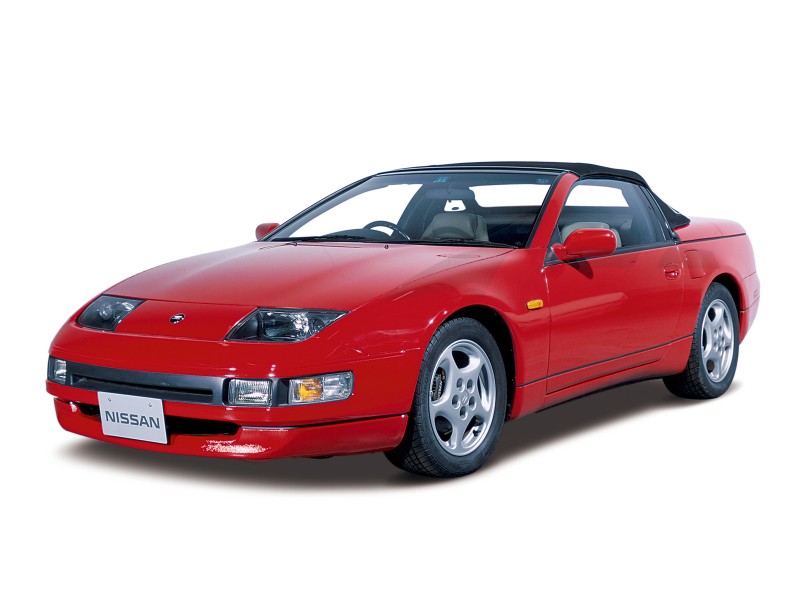
Unfortunately, Nissan seemed influenced by media and owner hype, and the notion of exotic-ness also creeped into late model 300ZX pricing. A strong Yen and unfavourable exchange rate didn’t help. With Honda’s truly exotic NSX selling in the same era, Nissan tried to piggyback onto the desirability of Japanese ‘supercars’ at the time, and sticker prices at the end of the 300ZX’s term had almost doubled from those at original launch. Inflated prices ultimately saw an early demise of new Z32 sales outside of Japan. The 300ZX was sold in its home market up until 2000, while most exports had stopped by around 1996.
Buying One
Buying a second-hand 300ZX, of either ilk, is fairly straightforward. Obviously, and as with any performance car, signs of abuse should be easy to spot. Both 300ZXs were designed to be driven hard, but there’s a difference between examples used for their intended purpose, and those which have been unloved and tortured.
Aftermarket performance upgrades are plentiful for these cars, so be on the lookout for modifications which weren’t installed with care. Some sellers might think that adjusted boost pressure, bigger turbo units, 20” rims and ECU software tuning might add value, but a stock standard unit will almost always be the better buy – even if these are becoming harder to come by.
Nissan issued a service campaign for leaky fuel injectors on its Z31 derivatives, so ask the owner if this procedure has been carried out. If he or she is unsure, this could be a tell-tale sign that they’re an interim owner without knowledge of this model’s history. A well-informed Z31 owner should be aware of this issue.
The Z31 was also known for leaky T-top seals, glitches in the climate control system and digital instrument cluster, and weak bushes in the rear suspension. Put these items on your radar for pre-purchase test drives.
As sad as it is, early Z32s with high mileage should be avoided, unless you’re prepared to spend on engine work. These cars’ cylinder heads are known to have valve issues resulting in compression loss. If possible, do a compression test and ask about any previous head work.
Other common Z32 problems include noisy clutch release bearings, brake master cylinders, engine cooling and turbo boost pressure loss. Pay close attention to the factory-installed dash gauges which can offer a wealth of information on test drives.
Pricing
Looking at the Patina Price Trends Tool (click here to look up your own cars), pricing wise it’s a bit all over the place at the moment with no clear trend for either generation of cars.
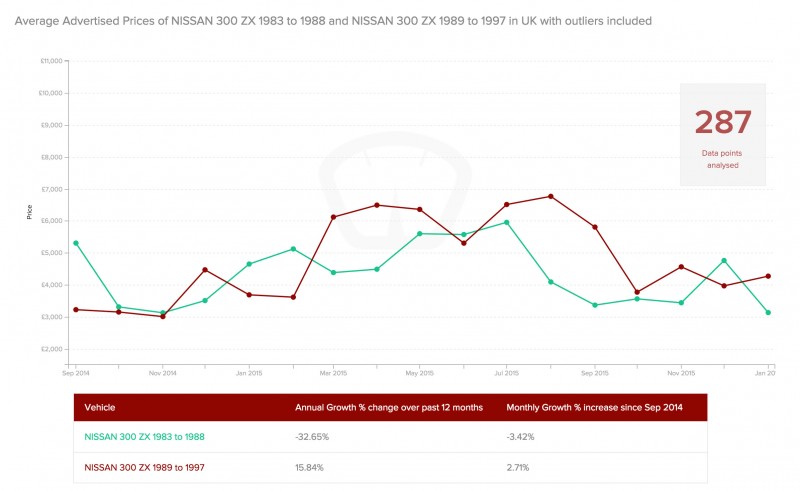
Experience would say that the early unmodified gen 1 z31 cars will rise in value over time, however unlike some other models in the market at the moment, the 300ZX is no sure thing. Buy because you want one and enjoy the car…
Jesse Adams